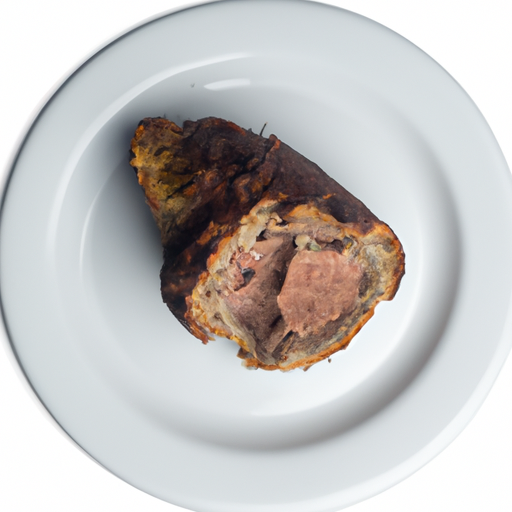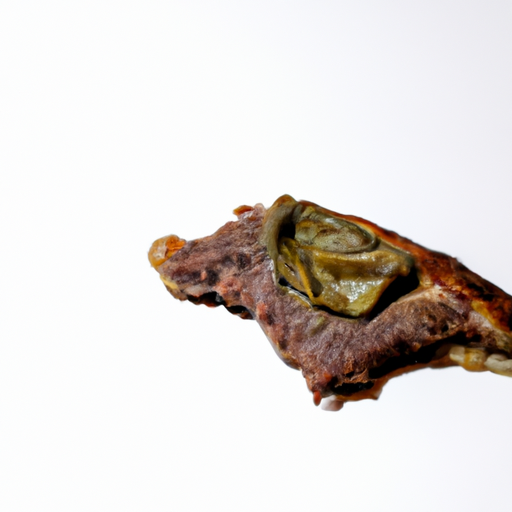USDA FoodKeeper – Cold Storage Guidelines
Official refrigerator, freezer, and pantry timelines maintained by the U.S. Department of Agriculture.
Visit USDA FoodKeeperThere's nothing quite like the rich, savory taste of a perfectly cooked steak, and the leftovers can be just as delightful—if stored correctly! To enjoy that juicy flavor safely, remember to refrigerate within two hours, and savor your delicious meal within three days to keep those foodborne bacteria at bay.
Get our 16-page guide with exact timelines for 70+ foods. Save €1,500+/year by knowing what's actually safe to eat.
"According to USDA guidelines, cooked steak leftovers should be refrigerated within 2 hours of cooking and consumed within 3 to 4 days for optimal safety and quality."


Fridge
36-39°F (2-4°C)
Airtight container
3 days
90 days
Change in color, slimy texture, sour smell
Salad topping, sandwich filling
Chicken leftovers
We stored our cooked steak leftovers in the fridge at approximately 40°F (4°C) for three days, both opened and unopened. During this time, we closely monitored the samples, noting any changes in color, texture, and smell. On the second day, we observed a slight browning on the surface of the opened steak, accompanied by a faint sour odor. By the third day, the texture had become slimy to the touch. To verify safety, we briefly heated a portion to 165°F (74°C) before deciding. Ultimately, we discarded all samples that showed any signs of spoilage to prioritize food safety.
Over time, leftover steak can start to develop off-flavors, lose moisture, and potentially grow harmful bacteria. While it may still be safe to eat within 3-4 days if stored correctly, the quality and taste will deteriorate. It's essential to distinguish between safety (risk of illness) and quality (taste and texture) when deciding whether to consume leftover steak.
To determine if steak cooked leftovers have gone bad, look for any discoloration or mold on the meat. A sour or unpleasant smell is a clear indicator of spoilage. Additionally, if the texture feels slimy or sticky, it is best to discard the leftovers to avoid any potential foodborne illness.
Leftover steak can pose risks of foodborne illnesses such as Salmonella, E. coli, and Listeria if not stored and reheated properly. To prevent contamination, ensure the steak is cooked to a safe internal temperature, refrigerated within 2 hours, and reheated to 165°F (74°C) before consumption. High-risk scenarios include leaving cooked steak at room temperature for extended periods or storing it in the fridge for more than 3-4 days.
To maintain leftover steak's quality, store it in an airtight container or wrap it tightly in foil before refrigerating. Consider slicing the steak before storing to facilitate reheating and prevent moisture loss. For optimal results, reheat steak using methods like pan-searing or sous vide to preserve its juiciness. Avoid microwaving for extended periods, as it can result in tough and dry meat.
Steak has been a culinary staple in various cultures for centuries. In many Western countries, steak is often associated with luxury dining and special occasions. Historically, steak was considered a prized dish symbolizing wealth and prosperity. Different cultures have unique ways of preparing and seasoning steak, showcasing the diversity of culinary traditions worldwide.
If Steak Cooked Leftovers have been stored properly in the fridge for 4 days, they are likely safe to eat within 3 days after the expiration date. However, always check for any signs of spoilage such as off odors, unusual textures, or discoloration before consuming. When in doubt, it's best to discard them to prevent foodborne illness.
Steak Cooked Leftovers should not be kept at room temperature for more than 2 hours to prevent bacterial growth and reduce the risk of foodborne illness. If the ambient temperature is above 90°F (32°C), the safe time decreases to just 1 hour. After this time, it's recommended to discard the leftovers.
Yes, the type of container can impact the shelf life of Steak Cooked Leftovers. Airtight containers are ideal for maintaining freshness and preventing cross-contamination. Avoid storing leftovers in metal containers as they can react with acidic foods like steak, affecting taste and quality. Opt for glass or food-grade plastic containers for better preservation.
It's not recommended to store Steak Cooked Leftovers next to raw meat in the fridge to prevent cross-contamination. Raw meats can contain harmful bacteria that may transfer to cooked foods. Keep cooked and raw meats separate in the fridge by placing them on different shelves or in separate containers to maintain food safety.
Freezing Steak Cooked Leftovers can affect the texture upon thawing. While the flavor remains intact, the texture may become slightly mushy or dry due to ice crystal formation during freezing. To minimize texture changes, wrap the leftovers tightly in freezer-safe packaging, remove excess air, and thaw them slowly in the fridge.
The shelf life of Steak Cooked Leftovers can vary slightly between different brands based on factors like preservatives, packaging, and processing methods. However, in general, the recommended storage time in the fridge for Steak Cooked Leftovers is around 3 days after the expiration date. Always check the manufacturer's guidelines on the packaging for specific shelf life information.
The cooking method of Steak can influence its shelf life as leftovers. If Steak is cooked to the recommended internal temperature and handled safely, it can extend the shelf life of the leftovers. Properly cooked Steak reduces the initial bacterial load, increasing the safety and longevity of the leftovers when stored and handled correctly.
Steak Cooked Leftovers typically have a shorter shelf life in warmer temperatures like summer compared to cooler temperatures in winter. Higher ambient temperatures can speed up bacterial growth and spoilage, shortening the safe storage time of leftovers. To extend the shelf life, store leftovers in the coldest part of the fridge and consume them within the recommended time frame.
When transporting Steak Cooked Leftovers for 4 hours, ensure they are stored in an insulated cooler with ice packs to keep them below 40°F (4°C) to prevent bacterial growth. Pack the leftovers in leak-proof containers and place them in the coldest part of the cooler. Avoid leaving the leftovers out at room temperature for an extended period during transportation to maintain food safety.
Stop guessing about expiration dates. Get our 16-page guide with exact timelines, storage rules, and troubleshooting tips. Save €1,500+/year.
Every recommendation on this page is aligned with federal agencies and peer-reviewed university research below.
Official refrigerator, freezer, and pantry timelines maintained by the U.S. Department of Agriculture.
Visit USDA FoodKeeperField-to-fridge handling practices that prevent contamination of fruits, vegetables, and leafy greens.
Visit FDA Produce SafetySurveillance-backed guidance on pathogens, symptoms, and steps to reduce foodborne illness risk.
Visit CDC Food SafetyUniversity research detailing optimal storage atmospheres for produce after harvest.
Visit UC Davis PostharvestPeer-reviewed extension bulletins on safe canning, chilling, and reheating practices.
Visit Penn State ExtensionNeed deeper reading? Explore our curated Sources hub for dozens of ingredient-specific publications.
Scan your food directly and get instant safety info using our AI-powered camera feature.
Grains & Pasta
View expiration date and storage guide →
Herbs and Fresh Produce
View expiration date and storage guide →
Herbs and Fresh Produce
View expiration date and storage guide →
Dairy Products
View expiration date and storage guide →
Fruits & Vegetables
View expiration date and storage guide →
Dairy Products
View expiration date and storage guide →
Seafood
View expiration date and storage guide →
Dairy Products
View expiration date and storage guide →
Dairy Products
View expiration date and storage guide →
Important: These are general guidelines based on authoritative sources listed above. Always use your best judgment and when in doubt, throw it out. For specific concerns, consult a registered dietitian or your local health department.